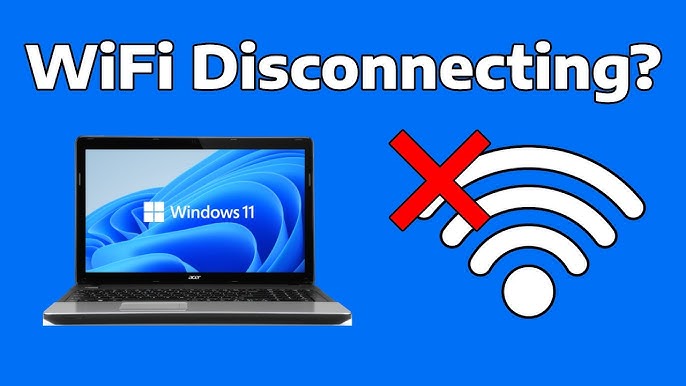Picture this; You are in a middle of an important video call or downloading a big file or even watching your favorite series, then bam! Your laptop suddenly disconnects from your Wi-Fi. Frustrating, right ? This is a common issue that can turn a productive day into a tech nightmare .
But don’t worry. Whether it’s a weak signal, a driver issue or even a sneaky power saving setting causing the hiccup, the good news is that most of these problems a re easy to fix. In this guide, we will walk you through practical steps to help you stay connected without a hitch.
Step 1: Check the basics.
Sometimes the simplest solutions are the most effective. Before jumping into complex troubleshooting , it’s essential to rule out these common problems.
- Signal strength matter. Is your laptop far from the router? Try moving closer to the router to see if the problem stabilizes.
- Test other devices. Is the issue limited to your laptop, or are other devices like phones experiencing the same problem? If multiple devices are disconnecting, the problem might be the router, or your Internet service provider (ISP). In such a case, restarting the router or contacting your ISP could resolve the issue.
Step 2: Update your Wi-Fi drivers
Outdated or faulty Wi-Fi drivers are a leading cause of disconnections. Keeping them updated ensures your laptop communicates efficiently with the network. Here is how to update them.
Windows Users:
- Press
Windows + Xand select Device Manager. - Expand the Network Adapters section.
- Right-click your Wi-Fi adapter and choose Update Driver.
- Select Search automatically for updated driver software.
For Mac Users:
- Go to the Apple menu and select system preferences.
- Click software update. If updates are available, install them to ensure the system and drivers are up-to-date .
For Linux users:
Updating Wi-Fi drivers in Linux always depends on the distro. For Debian based distros, open the terminal and run these commands.

If the problem persists, you may need to visit your laptop manufacturer’s website to download the latest drivers manually.
Step 3: reset and reconnect
when your laptop keeps losing its connection, resetting your network settings and then reconnecting may solve the issue. The first step is to forget the network.
Sometimes, your laptop’s saved network settings might be outdated or corrupted. Reset the connection by:
- Navigating to your laptop’s Wi-Fi settings.
- Selecting the problematic network and choosing Forget Network.
- Reconnect by selecting the network again and entering the password.
Additionally, refreshing your DNS cache can help fix connection issues caused by outdated or incorrect IP configurations.
Step 4: Adjust Power Settings
Laptops often optimize power consumption by cutting Wi-Fi performance. Change this setting for uninterrupted browsing:
- Windows:
- Go to Control Panel > Power Options.
- Select your plan, click Change plan settings > Advanced power settings.
- Set Wireless Adapter Settings to Maximum Performance.
- macOS:
- Check Energy Saver settings and disable options limiting Wi-Fi during inactivity.
Step 5: Check Your Hardware
If all the software and network troubleshooting steps fail, it’s time to inspect your laptop hardware. First, inspect your Wi-Fi card.
- For removable cards, Open your laptop’s back panel (if you’re comfortable doing so) and ensure the Wi-Fi card is securely connected to its slot.
- Replace the card if you notice physical damage or if it’s an older model.
- Also, you can use a USB Wi-Fi adapter. If your Wi-Fi card is problematic, a USB adapter can be an easy and affordable solution.
A laptop that keeps disconnecting from Wi-Fi can be frustrating, but with a bit of patience and troubleshooting, most issues can be resolved. By following these steps—starting with the basics, updating drivers, adjusting settings, and checking your hardware, you can quickly get back to uninterrupted browsing, streaming, and working.
Got any additional tips? Feel free to share in the comments and help others stay connected.






























